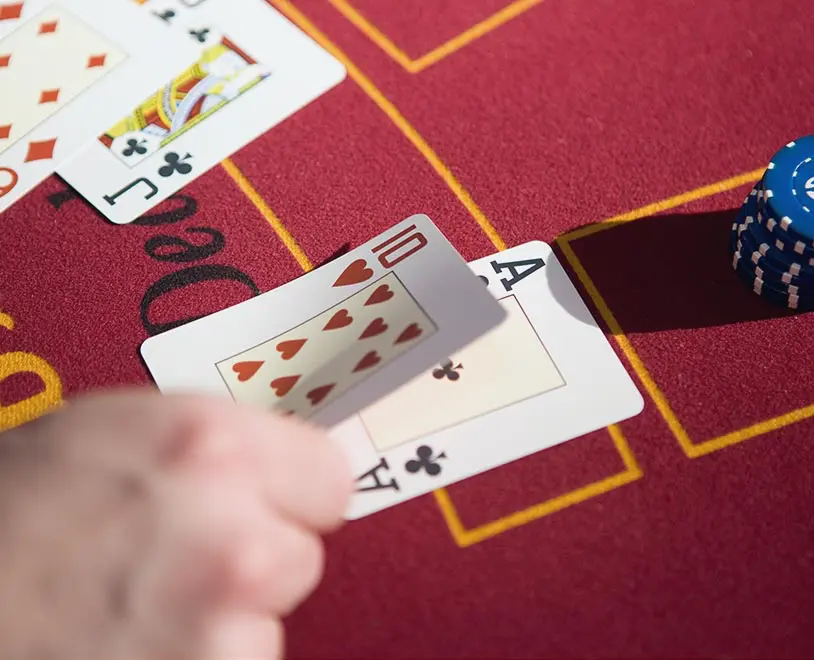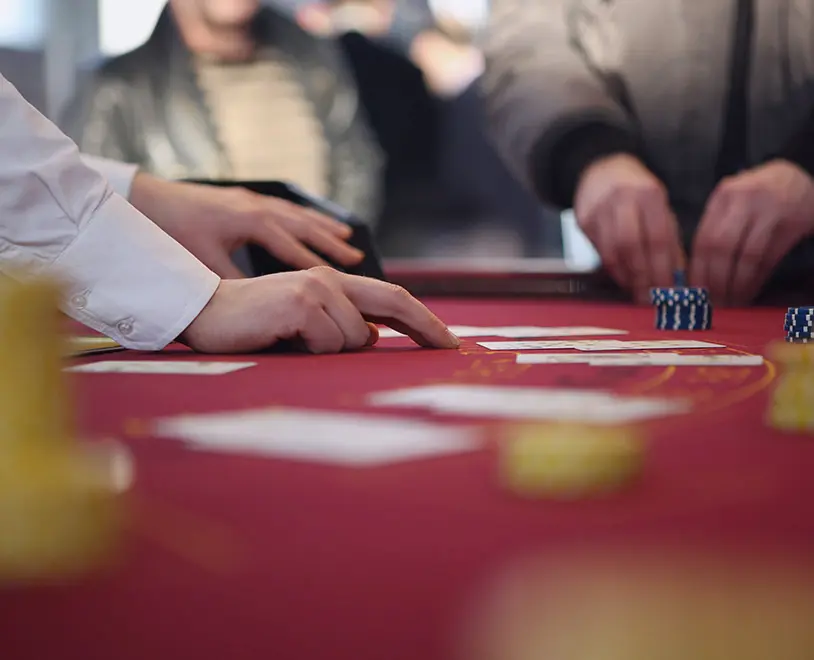Blackjack is an amazing game with a very low house edge – one of the lowest you’ll find at Bovada. But you have to play blackjack correctly if you want to keep that edge as small as possible. This means knowing the rules before you play, and playing only when you’re feeling good and your mind is sharp. Bankroll management is important, too; falling for tricks like progressive betting schemes is a great way to shorten your time at the tables.
Strategy is important, too. You should have at least a basic strategy for when to hit in blackjack and when to stand, as well as splitting, surrendering and doubling down. The right play has already been mathematically found for you; all you need to do is learn it and repeat it. But the same mistakes are still made over and over again. Here is a guide for eight of the most common mistakes when playing online blackjack:
Never Drawing When You Might Bust

As a shortcut, some players simply stop drawing once they have at least a hard 12 in their hand. This prevents them from busting, but it also prevents them from winning as much money as they could. Why a hard 12? Because you can still draw two Aces without going bust – in fact, you should split those every time.
Always Buying Insurance
Life tip: Just because someone’s trying to sell you insurance doesn’t mean you have to buy it. In blackjack, you can buy insurance anytime the dealer shows an Ace; it’s a side bet of half your original wager, and if the dealer happens to have a down-card worth 10 for a blackjack, you get paid at 2:1. This bet should be made for entertainment purposes only if you’re using a basic strategy.
Always Guessing the Dealer Has 10 in the Hole
Even if the dealer’s up-card isn’t an Ace, many players like to assume the down-card is worth 10 before they decide what to do. Ten points is the most common possibility, but the majority of the time, it’ll be a card somewhere between the Deuce and the Nine instead. You’ll lose money following this strategy.
Doing What the Dealer Does on 16 and 17
It’s almost clever: If the dealer hits on 16 and stands on 17, maybe you should do the same thing. But this takes away your options of splitting and doubling down, two very important plays in your blackjack arsenal. Don’t just mimic the dealer – take the time to learn the right strategy when you play at Bovada, and you’ll get the most out of your blackjack dollar.
Not Splitting a Pair of 4s when Dealer Shows a 5 or 6

A 5 or 6 Dealer upcard should influence your move because the Dealer is most likely to bust with these two cards. The only way to know this is by memorizing a chart that outlines the Dealer’s odds of busting for each upcard. This is integral to blackjack strategy because it tells you when to sit back and go easy on hitting.
In case you haven’t researched this topic yet, here are the bust rates for each Dealer upcard:
- 2: 35% Bust Rate
- 3: 37% Bust Rate
- 4: 40% Bust Rate
- 5: 42% Bust Rate
- 6: 42% Bust Rate
- 7: 25% Bust Rate
- 8: 23% Bust Rate
- 9: 23% Bust Rate
- 10: 21% Bust Rate
- Ace: 11% Bust Rate
When it comes to a pair of 4s, it’s generally advised to hit because it’s better to try to get an 18 than potentially get two 14s. However, when the Dealer shows a 5 or 6, his chance of busting is so high that you should try to maximize profits, which you can do by splitting and then potentially doubling down after the split. Check your game version’s blackjack basic rules to make sure you’re allowed to double after splitting. If not, you’re better off hitting.
Splitting a Pair of 10s
In blackjack, a score of 20 is the second-highest score possible. Splitting 10s jeopardizes that score. Sure, you could end up with two hands that have a score of 20, but, you’re better off keeping the 10s intact—no matter what the Dealer’s upcard is.
Not Doubling when Needed
When just learning how to play online blackjack, it can be tempting to limit your moves to hitting and standing. While that would expediate your learning, you’d be leaving money on the table for all the hands you should have doubled. The following four scenarios are perfect examples of when you should double down.
- You have an 11
- You have a 10, and the Dealer’s upcard is anything but a 10 or Ace
- You have a 9, and the Dealer has a 3 to 6
- You have a soft hand, and the Dealer has a bust card (refer to strategy chart for specifics)
Hit on 8-8 when Dealer Shows a 7
A pair of 8s makes one of the worst scores in the game: 16. A score of 16 puts you in a tough position because it’s high enough to bust (62% probability), but too low to be competitive. That’s why it’s best to split a pair of 8s. With the split, you can potentially take that 16 and get an 18 out of it, which would put you in a much better position.
The reason some players hit 8s when the Dealer shows a 7 is because they’re assuming the Dealer has a 10 in the hole. This strategy will cause you to lose more than you win over the long run. If you insist on hitting with a pair of 8s, reserve it for when the Dealer’s upcard is a 10 or Ace—not a 7.
When you’re getting started with blackjack, you’re going to make mistakes—it’s inevitable. But learning from these mistakes will help fine-tune your strategy. That’s why it’s best to start your training with online blackjack games. At Bovada Casino, you can play the New Blackjack for as little as $1 a hand, or completely free with Practice Play mode.
